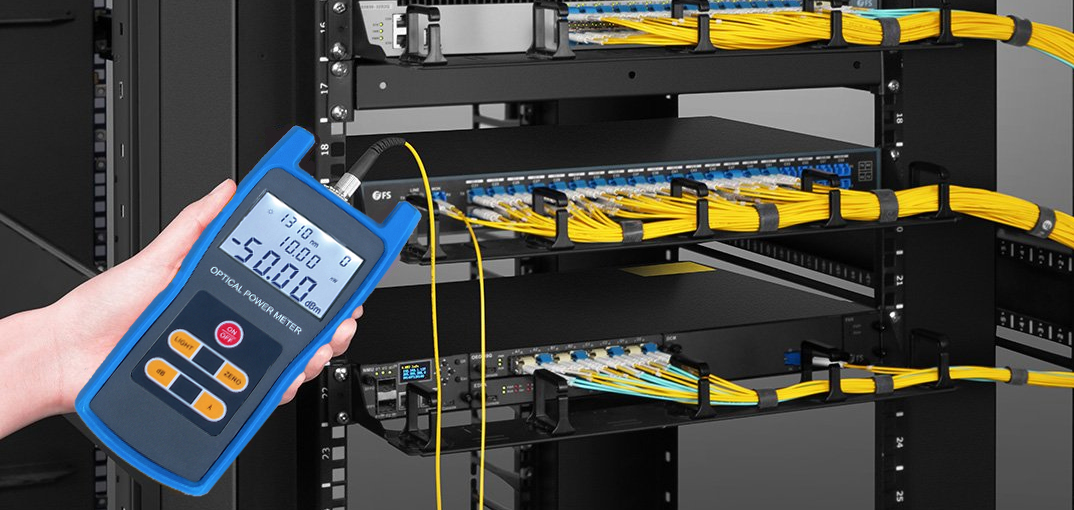The use of ofda enhances fibre evaluation with advanced optical technology.
Revealing the Secret Use Optical Fiber Testing for Reliable Data Transmission
In the realm of modern-day communication, optical fiber testing emerges as a vital practice for enhancing information transmission. Recognizing the complex applications of optical fiber screening invites a deeper exploration into its essential function in forming the future of data interaction.

Relevance of Optical Fibre Testing
The relevance of optical fibre screening can not be overstated, as it functions as an important part in making certain the integrity and performance of data transmission systems. In an age where high-speed interaction is critical, any kind of shortages in fiber optics can result in considerable information loss and reduced efficiency. Consequently, extensive testing methods are necessary to verify the stability and performance of optical cords.
Testing enables the identification of flaws such as micro-bends, macrobends, and splice losses that might impede signal top quality. It provides understandings right into the general depletion and bandwidth abilities of the fibre, making certain that the network satisfies specific operational requirements. Regular testing not just boosts system efficiency however also prolongs the life-span of the framework by determining potential issues prior to they rise into costly failings.

Types of Optical Fibre Tests
Various sorts of optical fibre examinations are carried out to ensure the performance and reliability of fiber optic networks. These tests can be classified into numerous crucial kinds, each serving a details function in analyzing the integrity of the fibre.
First, Optical Time Domain Reflectometry (OTDR) is a famous test that determines faults, interlaces, and ports within the fibre. By sending pulses of light and analyzing the reflected signals, specialists can identify problems along the fiber's size.
Second, insertion loss tests assess the quantity of signal loss when light passes through adapters or splices, which is vital for preserving network efficiency.
Third, return loss examinations measure the quantity of light reflected back towards the resource, offering insights into the high quality of connections and possible resources of disturbance.
In addition, continuity tests ensure that the fiber course is full, permitting technicians to confirm that the fiber is intact with no breaks. robotic vision.
Finally, aesthetic mistake locators make use of visible light to determine breaks or serious bends in the fibre, aiding in quick troubleshooting. Jointly, these examinations form a detailed strategy to keeping ideal efficiency in fiber optic networks.

Applications in Network Maintenance
In contemporary telecoms, effective network maintenance relies greatly on optical fiber screening to recognize and correct problems immediately. Regular screening guarantees that the network operates at optimal performance levels, reducing downtime and boosting user experience.
One of the main applications of optical fiber testing in maintenance is the discovery of mistakes, such as breaks, bends, or improper connections. Strategies like Optical Time Domain Reflectometry (OTDR) permit professionals to situate these concerns properly and examine the high quality of the fibre link. In addition, loss screening verifies the stability of the optical course, making sure that signal attenuation continues to be within appropriate limitations.
Regular maintenance testing likewise aids in preventative measures, determining prospective troubles before they rise into substantial failings. This proactive approach can save companies both time and financial resources. Moreover, during upgrades or growths, optical fiber screening ensures that new setups incorporate seamlessly with existing infrastructure.
Enhancing Information Transmission Integrity
Efficient network upkeep with optical fibre testing not just addresses prompt problems yet additionally plays a considerable role in boosting data transmission reliability. By recognizing faults, measuring signal loss, and evaluating the overall condition of fiber optic cords, testing guarantees that potential troubles are remedied before they rise right into considerable disruptions.
Regular optical fibre testing, such as time-domain reflectometry (TDR) and optical time-domain reflectometry (OTDR), allows service technicians to determine the specific places of breaks, flexes, or adapter concerns within the network. This look these up positive technique not only reduces downtime yet likewise enhances the efficiency of data transmission by making sure that the pathways for signals are clear and working successfully.
In addition, testing aids in verifying adherence to industry standards and specifications, which is essential for keeping the honesty of data circulation. By making certain the original source that each link meets required limits for loss and top quality, companies can bolster their confidence in the dependability of their data networks.
Inevitably, buying detailed optical fiber testing not only enhances information transmission reliability however also supports the long-lasting functional performance of interaction infrastructures.
Future Fads in Fiber Testing
Arising technologies are positioned to change fiber screening, leading the way for boosted performance and accuracy in data transmission diagnostics (ofda). As the demand for faster internet and greater bandwidth remains to increase, the combination of sophisticated devices such as synthetic intelligence (AI) and artificial intelligence (ML) is readied to change conventional fibre screening techniques. These modern technologies will certainly enable anticipating upkeep and automated fault discovery, considerably minimizing downtime and boosting network integrity
Furthermore, the fostering of Internet of Points (IoT) tools More Help will promote real-time tracking of fiber networks, permitting for prompt identification of performance issues. This change towards proactive monitoring will decrease disturbances and enhance information circulation.
In addition, developments in optical time-domain reflectometry (OTDR) and brand-new screening standards will certainly boost the accuracy of dimensions, making sure that information stability is maintained throughout the transmission process. The introduction of 5G innovation additionally demands the advancement of much more advanced fibre testing techniques to sustain its high-speed demands.
Final Thought
In verdict, optical fiber screening is necessary for keeping efficient data transmission within interaction networks. Routine testing not only makes certain conformity with market standards but additionally helps with positive maintenance, inevitably adding to the long-term reliability and performance of fiber optic systems.